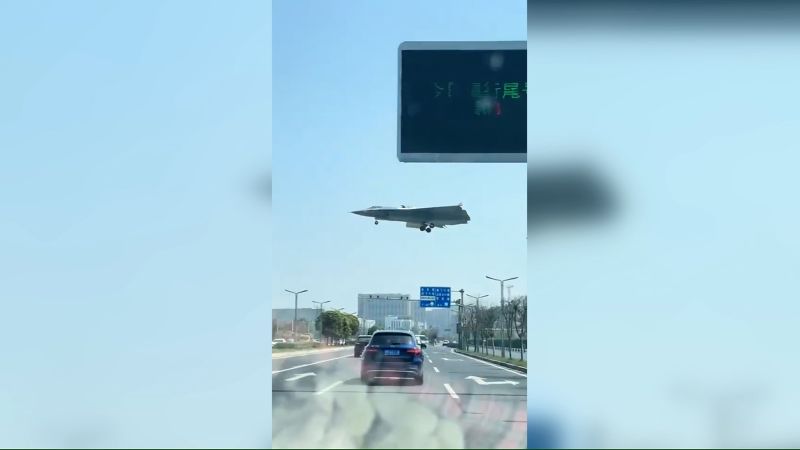New images have emerged of one of China’s futuristic fighter jets, a three-engine, tailless flying wing aircraft that Western analysts have dubbed the J-36.
It’s unclear when the images, which are taken from a video, were shot, but they appeared on Chinese social media sites on Monday and show the aircraft flying over a highway near the runway of Chengdu Aircraft Industry Group, the factory in Sichuan province where the new jet is believed to have been made.
Images of the J-36 first appeared on Chinese social media late last year, quickly capturing the attention of aircraft enthusiasts and military analysts. More appeared online last month.
The jet is thought to be a sixth-generation aircraft, incorporating the latest stealth technology, avionics and powerplant and airframe engineering.
Military aviation expert David Cenciotti, a former Italian Air Force officer, said on his website, The Aviationist, that the six-second video gives a close look at the design of the J-36.
“The trijet engine arrangement, with two engine intakes under the wings and a dorsally-mounted intake behind the cockpit, is a departure from conventional twin-engine setups seen in many contemporary fighters. This configuration may offer advantages in terms of thrust and redundancy,” Cenciotti wrote.
He said space on the aircraft’s belly shows room for internal weapons bays that could enable it to carry long-range strike missiles.
The J-36 could see China pull even with, or possibly ahead of, the United States in the race to field a sixth-generation fighter.
The US military’s fifth-generation jets – the twin-engine F-22 and single-engine F-35 – are generally regarded as the world’s best at the moment, though China also has two fifth-generation models, the J-20 and J-35. Neither of those Chinese jets has proven combat experience and effectiveness like the two US fighters, however.
US President Donald Trump announced last month that a contract for the US Air Force’s sixth-generation fighter – dubbed the F-47 – had been awarded to Boeing. Trump said a prototype of the jet had been flying for five years.
But a US Air Force announcement of the Boeing contract for the F-47 did not give a timeline for when the jets would be deployable, saying only the contract awarded on March 21 covered “the engineering and manufacturing development phase” as well as funds for “a small number of test aircraft for evaluation.”
While China’s J-36 was dominating military aviation chatter this week, it’s not the only sixth-generation jet that Beijing seems to have in the works.
The same day that pictures emerged of the J-36 in December, photos were also posted of a new tailless, twin-engine jet, referred to by analysts as the J-XX and sometimes the J-50.
The People’s Liberation Army (PLA) hasn’t publicly acknowledged the existence of either the J-36 or J-50.
But the state-run tabloid Global Times last month ran a story quoting various Chinese military experts as saying the images of the two new aircraft “if authentic,” show China is making quick progress on sixth-generation fighter jets.
“From a development point of view, China appears to be determined to make explorations on next-generation aviation equipment,” Wang Ya’nan, chief editor of Aerospace Knowledge magazine, was quoted as saying.
It can take years for a fighter jet to go from concept to public introduction, let alone deployment.
China’s J-35 was first shown to the public at last November’s Airshow China in Zuhai, but it had been in development for 10 or more years, according to analysts.

